The majority of your volleyball career will be spent practicing or playing in a group setting. Whether it’s gym class in school, a local recreation center or a school or club team, you’re going to spend the bulk of your time with teammates and at least one coach.
How can you get better at volleyball by yourself? There are really two kinds of things you can do to improve at volleyball by yourself: overall athletic conditioning and practicing solo volleyball drills.
Conditioning
The first part of pushing yourself to become the best player you can be that you can do completely on your own is to choose to emphasize conditioning. Volleyball is often viewed as a sport that is fun, casual, and for folks that aren’t very athletic. If you are going to dominate at volleyball, you better believe you have to whip yourself into shape as a full-fledged athlete.
As you progress through the levels of volleyball you see more and more serious athletes. When you dedicate yourself to improving your strength, agility, flexibility, and stamina, think of how much better you’re going to perform on the court!
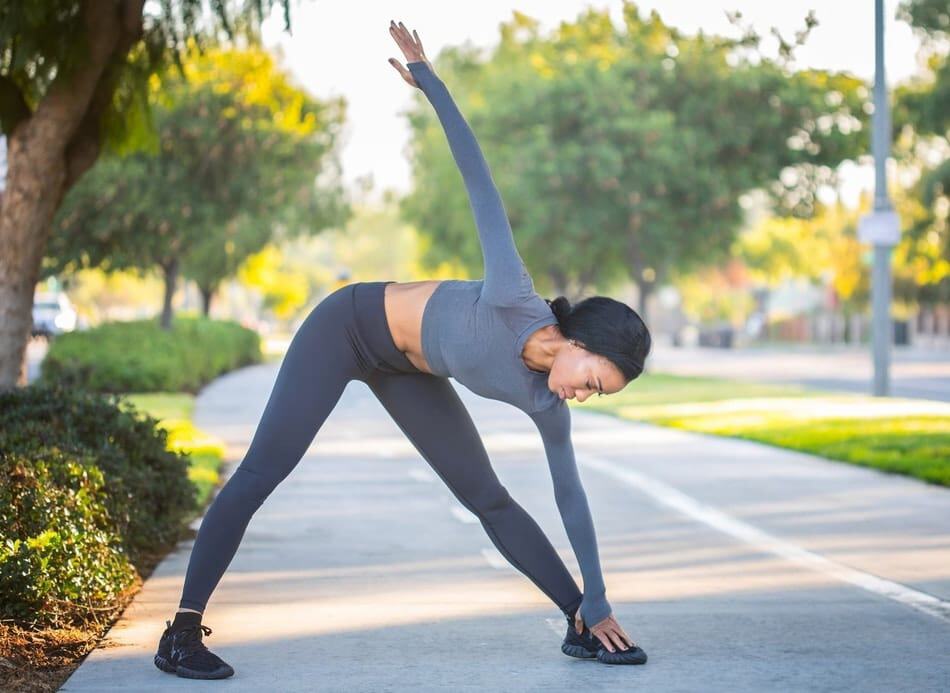
Warm-ups: Always begin your training by warming up your muscles. Begin with a light jog and some serious stretching. As you’re stretching, think about the muscles groups you use the most in volleyball and make sure to hit them all: arms, shoulders, hamstrings, calves and hip flexors.
Jumping Rope: Do sets of 100 with small breaks in between. One thousand is a great goal, so that would be 10 sets of 100 jumps.
Wall Sits: This is where you prop yourself against the wall in a seated position with your feet shoulder-width apart. You hold this position as if you were sitting in a chair.
Begin with 30 seconds at a time and work your way up to a minute. This isn’t just pain, it’s building the muscles you use to hold that squat in your ready position and those same muscles that help you surge across the floor quickly during gameplay.
Running Hills or Stadiums: If you have access to a good hill or football stadium, combine running a short distance (like 1 lap around a track) with running up the stairs of the stadium. With hills, you can combine multiple variations instead of just running.
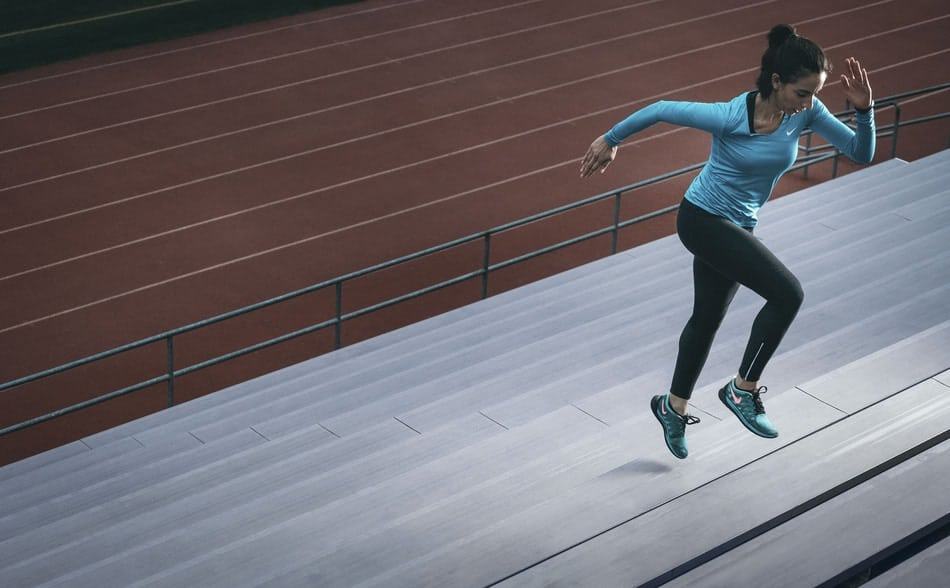
Try frog jumps, running backward or similar moves to challenge yourself. A fun one is called karaoke, where you do crossovers back and forth with your legs.
Ab exercises: You can do a lot of variations besides just situps and crunches. Try doing sets of 100 or a 1 minute time limit and try these variations:
Sit-ups: Besides just sitting up to bring your chest up to your knees, try doing side sit-ups or twisting sit-ups, alternating bringing your elbows to opposite knees.
Toe-touches: Extend your legs straight up into the air with your feet together. Sit up and reach and touch your toes.
V-ups or Reach Throughs: Extend your legs straight up in the air, but split your legs out to form a V. Sit up and reach your hands through, stretching as far into the sit-up as you can.
Crunches: When doing crunches pretend that your chin has a string attached to it that’s tied to the ceiling and someone is pulling it. Don’t face the same way you would during a sit-up. One advanced crunch is to do the alternating elbows to knees move while keeping your feet off the ground, this is called a Bicycle Crunch.
In and outs: Balance on one hip and keep everything else off the ground. Bring your knees up to your chest and back out in a crunching motion. Don’t let your feet or hands touch the floor. Do sets of 25.
Leg Lifts: Keeping your legs together and toes pointed and lift them all the way up and then on the way down, don’t touch the ground. Stop 6 inches off the ground and go back up. Do sets of 25.
Leg holds, 6 inches: Lift your feet off the ground with your legs straight, toes pointed down and just hold them 6 inches off the ground. Set a time limit and challenge yourself to increase it over time.
Flutter Kicks: Raise your legs up off the ground and then pretend you are swimming, keeping your legs straight at the knees, kick them back and forth in the air. Do sets of 200.
Grass pickers: Balance on your bottom with your legs bent in a crunch position with your feet off the ground. Your hands stay together and your knees stay together. You can either keep your ankles together or cross your ankles.
Twist one way with your hands and touch the ground on one side of your hips, while twisting the opposite side with your knees to balance and compensate. Do sets of 25.
Burpees: A burpee starts with a jump into the air (pretend you’re doing a block), then jump down into a plank position, jump back into a crouch, then jump back up into the air. Do sets of 25.
Planks: Plank exercises have many variations, but they all stress the core without much movement and usually involve holding the position for a time limit. The traditional plank is where you are in a push-up position but you lower yourself down onto your forearms.
Hold your body extended, as straight as a plank of wood. You should remain up on your toes, keeping your bottom down so that your body is in a straight line.
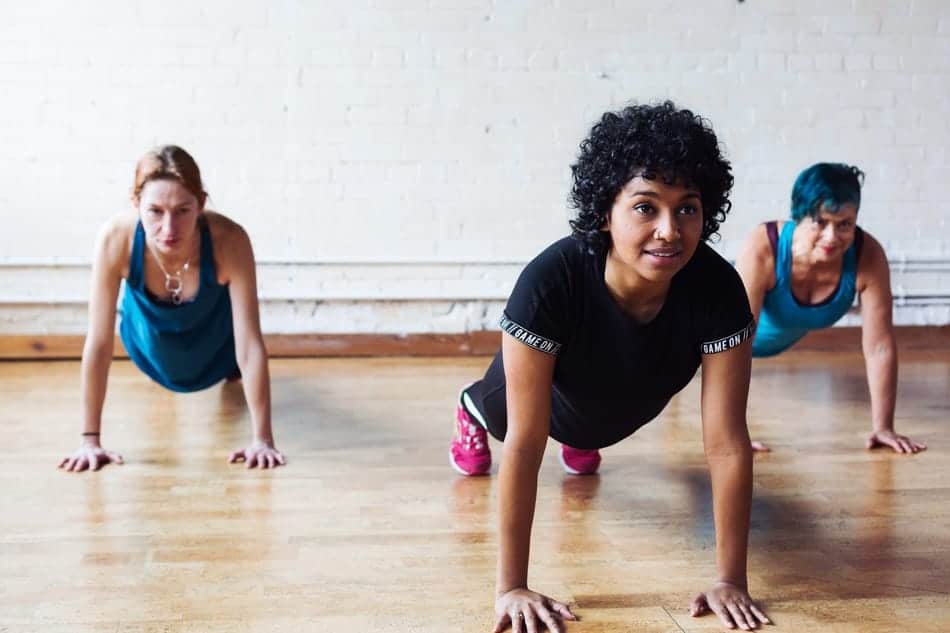
For variation, you can do hand planks where you hold yourself up on your hands like the top of a push-up position. Side planks are when you turn your body and hold yourself up with one hand or forearm.
Plank Mountain Climbers: You start in a push-up position and bring one knee up to the opposite elbow. Quickly bring that foot back down and alternate to the other knee coming up to the other side. Do sets of 25.
Standing Mountain Climbers: Reach up into the air and then act like you are climbing a mountain at super speed. Bring one knee up, while pulling the opposite arm down and then alternate. This should be quick like a jumping jack. Do sets of 100.
Jumping Jacks: Do sets of 100. These are more of a warm-up exercise, but also useful in a circuit.
Circuits: Create a circuit for yourself out of these exercises. Pick several of them that you can do in a row. Give yourself a time to shoot for and do 30 seconds of each one or 1 minute of each one.
Work your way through each exercise back to back and then take a short break. Set a goal of how many circuits you will do before you begin.
If you’re getting ready for tryouts for the first time, check out our article called 11 Steps to Make the Volleyball Team With No Experience.
Solo Drills
Setting Drills
Wall Sets – Stand close to the wall and do quick sets for 1 minute. Take a step back and set for 1 minute. Take a giant step back and do far sets for 1 more minute.
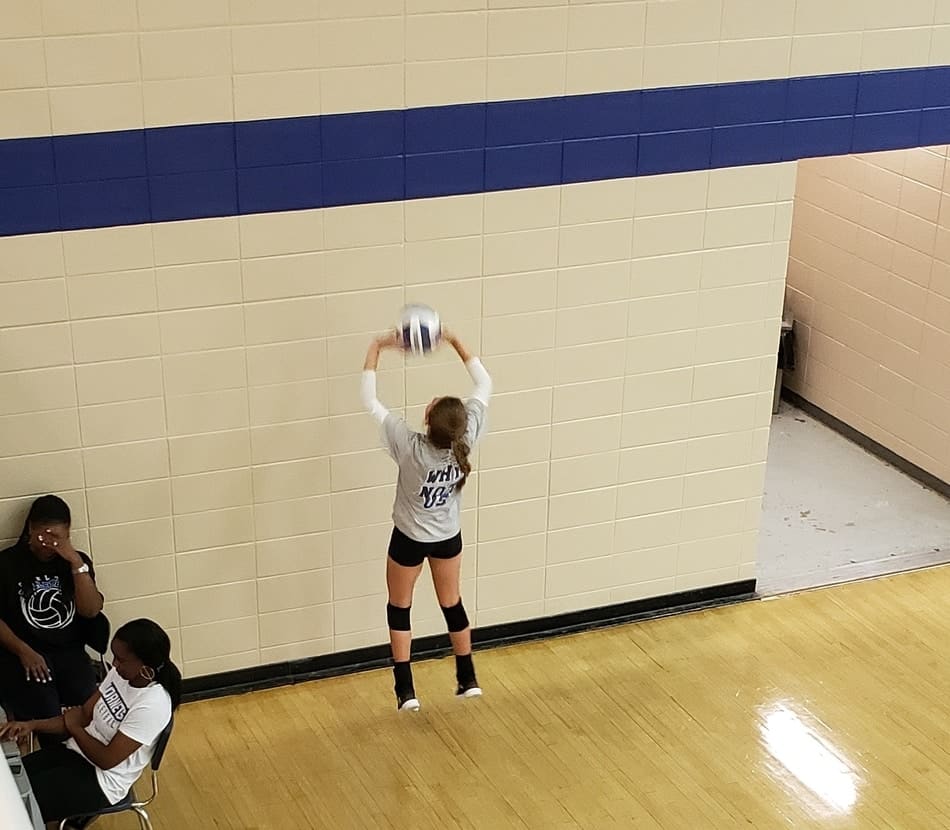
Laying Down Sets – Lay on your back with your knees bent and feet flat on the floor. Set yourself 50 times. Do another set of 50 keeping the ball as low as possible. For the third set of 50 push as high as you can without losing control.
Passing Drills
Square on the Wall – Tape a square on the wall the top of which is as high as you can reach and make it 2 feet wide and 2 feet high. Practice passing into the square, make 50 passes into the box.
For the next progression, take a side step to the right, pass it into the box and move to play the rebound. Go back and forth, right and left passing into the box 50 times.
Next progression is to get down on one knee and again pass 50 times into the box. Make sure to pay attention to keep good form.
Pepper the Wall – Begin by practicing alternating setting and passing to the wall. After mastering this, mix in the hit as well.
High, Medium, Low – Using your platform pass, bump the ball very high, then medium, then low, keep alternating and see how long you can control it. This is not against a wall, it’s simply straight up in the air.
Hitting Drills
Hit the Wall – Stand 3 paces away from the wall. Hit the ball so that it bounces just a few feet in front of the wall and bounces back toward you. Don’t just hit the rebound continually, this produces bad form. Instead, make these methodical, quality hits. Focus on your contact with the ball, getting your hand over the top and snapping your wrist.
Approach the Net – If you have a net of any kind, or a fence or a wall, use it for this drill. Practice your approach using that physical object as a way to practice how close you are. Your stepping approach should be left-right-left. You want to visualize turning your body toward your setter during the last step of your approach, then transition bringing your momentum upward, then rotate your shoulders as you strike the ball toward your target on the other side of the net.
Serving Drills
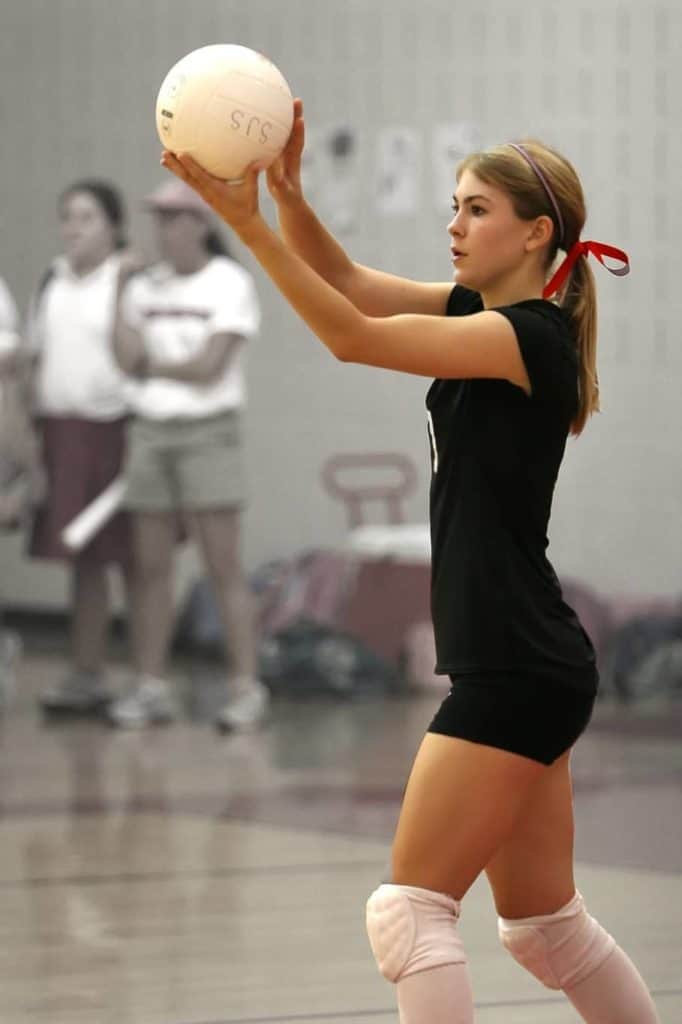
Serve the Wall – To do this you need to pace off a real volleyball court to be able to measure for yourself in this drill and your wall must be tall enough to allow hitting above the 8 feet (the height of the net). Mark the wall in some way at 8 feet.
Pace off the distance of the court. Practice serving as close to that line as you can. To make it more difficult, you can create sides to the left and right to practice aiming at a narrow gap.
The fact that you’ve read this far means you are seriously considering dedicating yourself to improving by working out on your own. I want you to know, YOU’VE GOT THIS! While others are sitting on the couch, you’re going to be shaping your future! Success comes to those that take action, so plan your action today.
Related Questions
What Is A Libero Drill You Can Do By Yourself?
Specifically for liberos, the traits that always need to be emphasized are agility and reaction speed. One great drill to do on your own will require a ball and a wall. While others may practice setting or passing against a wall, the libero needs to practice digging.
So toss the ball up against the wall, swing a hit and then react as a dig. As you get the coordination of this drill, challenge yourself. Just how hard can you hit it and still pick it up? Vary the toss and the swing to test your reaction and high-speed judgment.
If you would like to learn more about playing the libero position, check out our article called Master Guide To Liberos In Volleyball: Rules, Rotation, And Tips.
What Are Some Volleyball Games You Can Play Without A Net?
Freeze Tag – Freeze Tag is a common game that really makes sense for volleyball players because it incorporates diving! Limit your team to one side of the volleyball court and when a player is tagged, they have to freeze with their legs apart. To unfreeze a frozen player, someone else may dive through their legs. The object of the game is for the player who was “it” at the beginning to freeze the whole team.
Basket Volley – Often when you don’t have a net, you may have a basketball goal to work with. Challenge your team to compete at who can pass or volley the ball into the hoop. Just like playing HORSE with a basketball, players take turns attempting a successful shot by tossing it to themselves and then passing it to the net. If successful, the other players must perform a shot from the same spot. Whoever misses earns a letter in HORSE. When you’ve spelled the word, you’re out!
Knee Tag – Have everyone partner up and when the leader says “Go” you have to tag your opponent’s knees as many times as possible in 30 seconds. Don’t let them touch yours! This is a great warm-up game that gets everyone competing and ready in the down-low ready position. If your team really gets into it, have a tournament to see who is the greatest knee-slapper of all!
What Are Some Volleyball Workouts For Jumping Higher?
Frog Jumps are a great exercise for building up your jumping power. Stand with your feet shoulder-width apart and hop like a frog would. Make sure to begin in a deep squat, use your arms to help propel yourself and hop with both feet even, landing and coming back down into a low squat. Variations you can try are Backward Frog Jumps and Up Stairs or On and Off of a Box Frog Jumps.
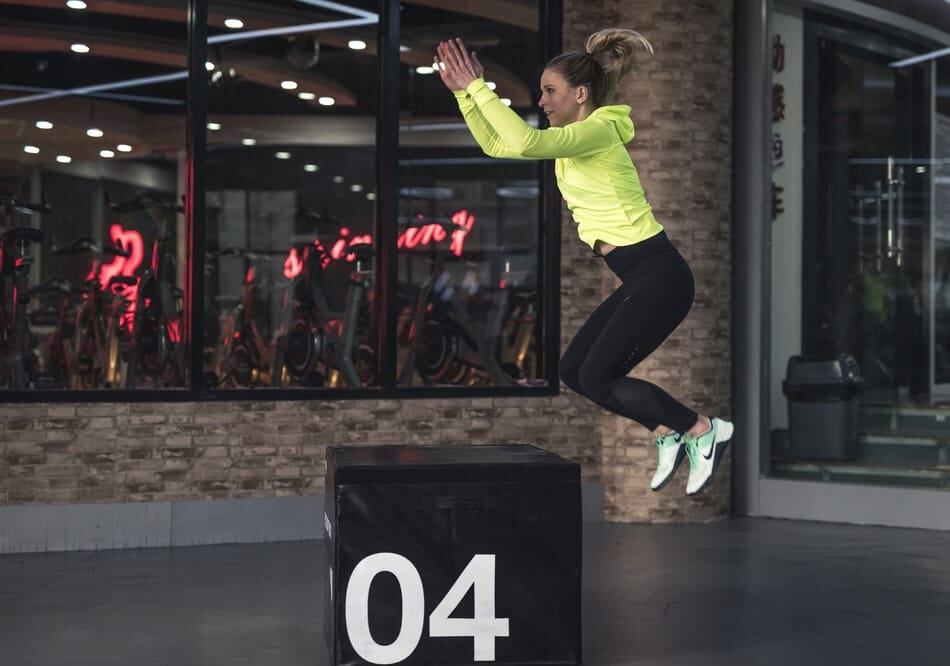
High Knees are an exercise that can be quick cardio or a slower power movement. For building jump strength, practice skipping with high knees, really propelling your knee up to work your hip flexors, quads and calves.
Photo credits:
Stretching image by Irina Logra from Pixabay
Stadium image by StockSnap from Pixabay
Planks image Sarah Pflug on https://burst.shopify.com/photos/: https://burst.shopify.com/licenses/shopify-some-rights-reserved
Serving image by Keith Johnston from Pixabay
Box jump image by Li Sun from Pexels
Recent Posts
Athletes, listen up! Do you have a closet full of old jerseys, sweatpants, and tees that you just can't seem to part with? Well, dust them off, because you're sitting on a goldmine of fashion...
You may have heard, or you may have noticed, that there's been a change to the rule about double contact in volleyball. In 2022, an experimental rule change began to be implemented, where the double...
